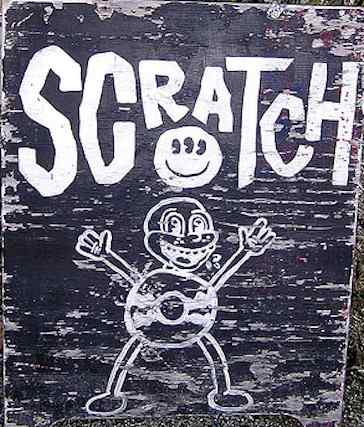 Food is so important, unless you were raised on a working farm, most of us have no idea where our food comes from, during the last Great Depression many people survived because they were less than one generation out from the farm, many had gardens, chickens, a milk cow… now people live crammed into cities with postage stamp sized yards with HOA’s and city ordinances that keep them from growing anything but grass, and Heaven forbid they have more than a dog or cat…
Food is so important, unless you were raised on a working farm, most of us have no idea where our food comes from, during the last Great Depression many people survived because they were less than one generation out from the farm, many had gardens, chickens, a milk cow… now people live crammed into cities with postage stamp sized yards with HOA’s and city ordinances that keep them from growing anything but grass, and Heaven forbid they have more than a dog or cat…
There is a lost art, the art of cooking, specifically from scratch, given a kitchen from our grandmother’s time, how many of us would be able to whip up a meal? Without microwaves, without box mixes, without the frozen conveniences in pre-packaged plastic… Fortunately I’m not the only person who thinks this way, who wonders about these things.
The link to the original article can be found at the bottom of this post.
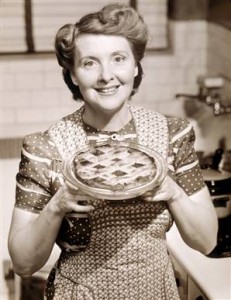
If you compare the meals served in many of the kitchens today to meals served 100+ years ago, there is one very big difference. Nearly every meal served in North America has at least one dish that has come from a box, bag or pouch.
Take breakfast, for example. Did you have toast? If so, did you make the bread? Cereal? One of those little packs of Quaker oatmeal, all flavored up and just waiting for you to add water? Did your breakfast originate in the freezer? Frozen toaster versions of pancakes, waffles and pastries abound in many kitchens.
Last fall I did a “Scratch Challenge” during which everything we ate had to be made from scratch – no convenience ingredients allowed. It wasn’t until I did this that I realized that even in my fairly “clean” kitchen, there still remained a lot of processed items.
If you do a quick survey of your own kitchen, you may be surprised at what you find. I discovered that the best way to clean up my act was to focus on cooking only from scratch. Now, my kitchen has only a few holdouts, most of which are there for food storage purposes.
Some of the most common processed items that “sneak in” are dairy and grain products:
- Bread
- Yogurt
- Cottage Cheese
- Crackers
- Pitas
- Tortillas
- Cereal
- Pasta
None of these are incredibly difficult to make but they ARE time consuming. In a world that is ever-increasingly geared towards convenience, few people take the time to roll out noodles or bake cookies these days. Birthday cakes come from the bakery, cookies come from a bag with a convenient tab to reseal it, and bread comes from a shelf at the grocery store, so perfectly uniform that if you put it back and mixed all the loaves up, you’d never find the original loaf. (Anyone who has ever baked a loaf of bread will tell you, they all get a funny lump here and there!)
All of this easy-access food has taken a deeper toll than you might imagine.
…A toll on our health.
…A toll on our waistlines.
…A toll on our ability to make the simplest item on our own.
…A toll on the time we spend with our families.
…A toll on the next generation, as we fail to teach them the arts that are vanishing as our grandparents pass away.
Cooking from scratch is actually an analogy for today’s society. Those who take the road less traveled are considered eccentric throw-backs to a far away time.
People feel that we are making unnecessary work for ourselves and that our lives would be vastly improved by tossing a shiny cellophane bag of bread into the grocery cart instead of taking a couple of hours to mix the ingredients, knead the dough, let it rise, knead it some more, then shape it into the desired form. But when you toss that bag of bread into the cart, you are getting undesirable ingredients (and in many cases, toxins). You are missing out on teaching your child how to judge the composition of the dough by the feel of it in her hands when she kneads it. You don’t get to inhale that delicious aroma emanating from your oven, and you totally skip that mouth-watering anticipation as you let the loaf rest long enough for you to slice it. Packaged bread from the store doesn’t serve as so fine a vehicle for melting fresh butter and transferring it your mouth once you finally get to cut into your fresh, wholesome bread.
It’s easier than it seems.
Media is partly to blame for making it seem difficult to actually cook. Most of the advertisements for processed food available at the grocery store tout the convenience of these items. You never see a mom with flour all over the front of her apron and her hair in a pony tail. Instead, the TV-commercial mothers are perfectly coiffed, wearing high heels and a skirt, placing a dish on the table with a flawlessly manicured hand. They are never rushed or harried, of course, because they’ve used pre-shredded cheese along with their premade noodles and their can of sauce. They look like they just stepped out of the office and “poof” a dinner has appeared in their kitchens.
If you can read and possess the ability to use a measuring cup, you can cook. It’s that simple. It seems almost fashionable lately to claim an inability to cook, as though preparing food is beneath a certain level of sophistication. When you start out, sure, there is some trial and error. Sometimes you end up having a peanut butter sandwich in the early years. But for the most part, with some very basic tools, cooking is foolproof.
Case in point: my oldest daughter was a little bit behind on reading when she was in 3rd grade. However, she had a fascination with cooking. So, to help improve her reading skills, I began letting her cook. She would pour through my cookbooks and choose a meal. She’d make a list, we’d check what we had in the house and what we needed from the store. When she was 9 years old, she made a cheese lasagna, from scratch, including the marinara sauce, completely unaided. (And it was delicious!)
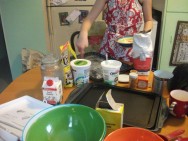
Basic scratch cooking is not some mysterious art that requires 4 years at Le Cordon Bleu in Paris – it’s just a simple matter of reading instructions and putting them into action.
It doesn’t take that much additional time.
The thing is, with a bit of pre-planning, even the busiest working mother can cook from scratch, without the use of convenience items.
Every weekend I spend a few hours in the kitchen prepping food for the week ahead. I do some baking (cookies, granola bars, and bread), clean and chop up veggies, pack little containers of healthy snacks for my daughter’s lunch, and cook a few items to be used throughout the week. I usually roast something on the weekend and cook up some seasoned ground beef or turkey, then add these things to meals throughout the week. I was more focused on this when I worked outside the home, but still do it to some degree.
Never forget about your crock pot! That valuable kitchen appliance can have dinner ready and waiting when you get home from a long day at the office, in the garden, or out with the kiddos. It makes delicious pot roasts and even rotisserie-style chicken! It’s also great for soups, stews, chili and spaghetti sauce. You can make the cheapest cut of meat tender and delicious by slow-cooking it for 10 hours on low, so this is helpful to the budget as well.
If you’re looking for convenience (and let’s face it, we all need convenience sometimes!) here are a few “fast foods” that fall into the scratch category.
- Nuts
- Trail mix
- Fresh fruit
- Dried Fruit
- Salad (extra points if you’ve already assembled it and just need to dip some out and add dressing!)
- Veggies like carrots, radishes, sugar snap peas, celery and cherry tomatoes
- Steamed veggies with cheese
- Eggs (super fast to fry, scramble or boil)
- Yogurt (that has already been made earlier) topped with fruit and granola)
- Leftovers
- Cheese (opt for a healthy version without additives and artificial colors)
It’s healthier.
Any item you make from scratch is going to be far healthier than its convenience food equivalent. Take cookies, for example. Who doesn’t love cookies? I bake them 2-3 times per week – there are always some in the jar. However the ones I make at home contain wholesome ingredients like freshly ground flour, organic sugar, coconut oil and dried fruit. The ones that I would buy at the grocery store, 9 times out of ten, would contain unsavory items like HFCS, genetically modified ingredients and fruit preserved with sulphites.
The sad thing is, if you look at the labels on the convenience items at the store, they like to tout the health benefits all over the brightly colored package. It makes me livid that people are being fooled by this. Stamps of approval from the FDA, the American Heart Association, the USDA and other nutritional agencies mean absolutely nothing except that the manufacturer of the product has made all the right donations. If a food has to be “fortified” with vitamins and minerals, that essentially means that the basic food has been depleted of those beneficial nutrients and that they had to be added back in artificially. Your body is miraculously designed to take nutrients from food and doesn’t recognize many of these artificial versions of nutrients as such.
When you make it yourself, you know precisely what is in it. You know that your family member with allergies is safe, that you aren’t unknowingly consuming GMOs and that you aren’t ingesting preservatives that do double duty as drain cleaner.
It’s cheaper.
You will save a TON of money cooking it yourself. For example, a one cup serving of brown rice, cooked in broth and prepared from scratch costs less than 10 cents (and contains nothing yucky). A one cup serving of flavored Uncle You-Know-Who’s rice costs up to $1. A cup of oatmeal from bulk-purchased steel cut oats costs about 5 cents, but a little brown packet that you pour boiling water over costs 50 cents.
The reason for this? Time is money. Whether it’s your time or the food manufacturer’s time, there is a cost involved. Some people feel that it’s worth it to pay for this convenience. What they don’t consider is that the hands-on time in cooking these items from scratch is often minimal. I use the oven to bake my brown rice and all I have to do is bring the pot to a boil on the stove top, put it in the oven for 1 hour, and walk away. If that hour is not “hands on time” then I really don’t think that it could be considered an hour of actual work, do you?
Shopping to stock your pantry and purchasing basic items in bulk will save you a fortune at the grocery store. As an added bonus, you’ll find that by keeping a good supply of all of your basic items, you will end up having to make fewer trips to the grocery store. (And come on, every time you go to the store, if you’re anything like me, you end up with at least ONE thing that wasn’t on your list! See? More savings!)
It’s a necessary skill for a prepper.
When you think about the skills you need for preparedness, cooking might not be the first thing to come to mind. You might consider marksmanship, carpentry, bush crafting or first aid, but keep in mind that a good hot meal is too valuable to be overlooked. Not only does it nourish your family, but it is also a comfort in a world that might have just become incredibly frightening.
Many of your preparedness purchases will be “ingredients” rather than meals. Many preppers have pounds and pounds of rice, beans, wheat berries and oats, but they won’t do you much good if you don’t know how to prepare them. It’s important to learn now what to do with these items, when back-up is as close as the grocery store or pizza delivery. It takes practice to make a tasty pot of beans or too cook brown rice to the perfect fluffy consistency and in a SHTF scenario, you don’t want to risk wasting precious food.
The other thing to consider from a preparedness point of view is that if the supply lines are down, you won’t be able to go to the grocery store to replace your boxes of Rice-A-Roni. You may, however, be able to replenish basics like flour or grains through barter with local farmers. One of these days, so-called convenience items may be a thing of the past, an artifact from a world rocketing towards collapse.
Here’s how to get started.
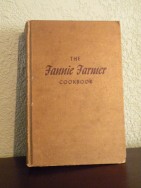 The first thing you need to do is acquire a good cookbook. I have lots of cookbooks that have been purchased at yard sales and library sales over the years. I find that the most valuable, the ones I turn to again and again, are the old books. I really love cookbooks that were written during the Great Depression, or even earlier. My prized possession is my Fanny Farmer cookbook, written in 1896 and originally published as The Boston Cooking-School Cook Book. I have referred to this book again and again, because it has instructions for things that are rather difficult to find in more modern tomes. As well, you don’t find ingredients like canned “cream of chemical” soup – you are walked through making a basic bechamel sauce instead.
The first thing you need to do is acquire a good cookbook. I have lots of cookbooks that have been purchased at yard sales and library sales over the years. I find that the most valuable, the ones I turn to again and again, are the old books. I really love cookbooks that were written during the Great Depression, or even earlier. My prized possession is my Fanny Farmer cookbook, written in 1896 and originally published as The Boston Cooking-School Cook Book. I have referred to this book again and again, because it has instructions for things that are rather difficult to find in more modern tomes. As well, you don’t find ingredients like canned “cream of chemical” soup – you are walked through making a basic bechamel sauce instead.
With the internet you can find basic instructions for making just about anything. Find an author that doesn’t use hard-to-find ingredients and that shows step by step illustrations. I really love the Martha Stewart website for the clarity of the instructions, but Martha is in a rather different economic bracket and sometimes her recipes contain very pricey ingredients. Her 101 articles can’t be beat, though!
Next, be sure you have some basic kitchen supplies. You need basic cookware and utensils, obviously. Other useful (but not 100% necessary) items are:
- a kitchen timer (this is very very important unless your attention span is far more keen than mine)
- an inexpensive little food processor
- a candy thermometer (more important when your just starting out – later you will be able to judge when something is the “right” temperature)
- a good sharp knife
- a grater with different sized holes
- measuring cups and spoons
- a colander
- a whisk
- a potato masher
I’m not a huge fan of gadgets, particularly electric ones. You don’t want to be reliant on those and then suddenly have to make everything without them in the even that the grid goes down. Bread machines, for example, while wonderfully convenient, would be of little use without power. If you are already faced with having to cook using alternative methods (like over an open fire) you don’t want to also have to learn how to knead dough. Trust me, in such an event, you’ll have enough challenges!
Experiment!
Once you have the basics down, you can begin to experiment, and this is what separates the “decent” cooks from the really “great” cooks. Initially, don’t veer too far from the original recipe. You can start by altering the spices to suit the preferences of your family. Next thing you know, you’ll look at a recipe, get a general idea of what they’re making and then set off to create your own unique dish!
https://www.theorganicprepper.ca/the-lost-art-of-scratch-cooking-02282013
Daisy Luther is a freelance writer and editor. Her website, The Organic Prepper, offers information on healthy prepping, including premium nutritional choices, general wellness and non-tech solutions. You can follow Daisy on Facebook and Twitter, and you can email her at daisy@theorganicprepper.ca

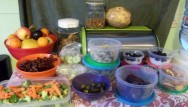
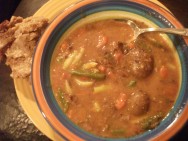
One Response
Thanks! This is great information, and it really influenced me to want to cook from scratch. My grandmother cooks from scratch most of the time and I absolutely love her cooking. Lately I have been getting more into nutrition, especially with a little one to look out for, and cooking from scratch seems like such an obvious answer to my question of how to find nonGMO, unprocessed food without paying an arm and a leg for it. Thank you so much!